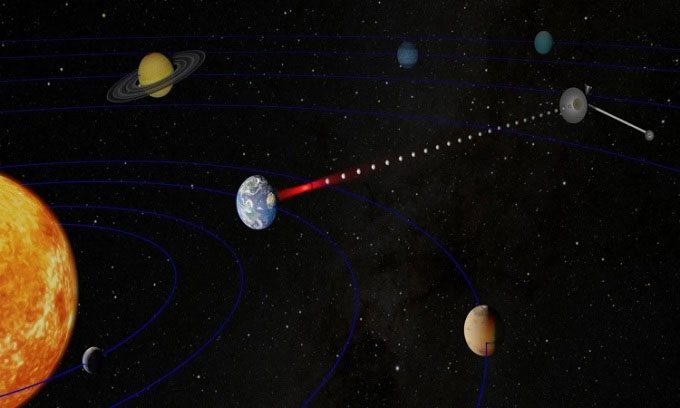The design for a bullet-beam propulsion spacecraft could reach farther than the Voyager spacecraft, which is currently traveling through interstellar space beyond the Solar System, in just 5 years.

The bullet-beam propulsion system will consist of two spacecraft. (Image: Wired)
Assistant Professor Artur Davoyan at the University of California, Los Angeles, introduced a bullet-beam propulsion system capable of sending large spacecraft into interstellar space, as reported by Interesting Engineering on March 16. This design has the potential to propel spacecraft to other star systems in the future and has received $175,000 in funding from NASA’s Innovative Advanced Concepts (NIAC) program.
Current chemical rockets are not fast enough to travel beyond the Solar System within an ideal timeframe. This is why Davoyan developed a new design to propel spacecraft using bullet beams, inspired by billionaire Yuri Milner’s $100 million Breakthrough Starshot initiative launched in 2016. Breakthrough Starshot proposes using millions of lasers aimed at small probes with lightweight sails to propel them to the nearest star to Earth, Proxima Centauri, in 20 years.
For Davoyan’s bullet-beam propulsion design, he and his team will use two spacecraft. One will depart for interstellar space while the other orbits Earth. From there, the spacecraft in orbit will fire thousands of small metal bullets at the interstellar ship every second. The spacecraft will also direct a 10-megawatt laser beam at the interstellar vessel. This laser will strike the bullets, heating them to a plasma-generating threshold. The plasma will accelerate the remaining bullet fragments, allowing the bullet beam to provide thrust, enabling the interstellar craft to travel at tremendous speeds.
The Breakthrough Starshot initiative aims to propel probes at 20% the speed of light, which limits its application to small vehicles equipped with simple cameras. Davoyan believes the bullet-beam propulsion system could accelerate a one-ton probe to speeds of approximately 480,000 km/h, ten times faster than traditional chemical rocket propulsion systems. The design is also fast enough to surpass Voyager 1, the farthest human-made spacecraft, in just 5 years.
Through NASA’s NIAC program, Davoyan’s team has the funding to demonstrate the feasibility of this design. Similar to Breakthrough Starshot, the system relies on advancements in laser technology.


















































